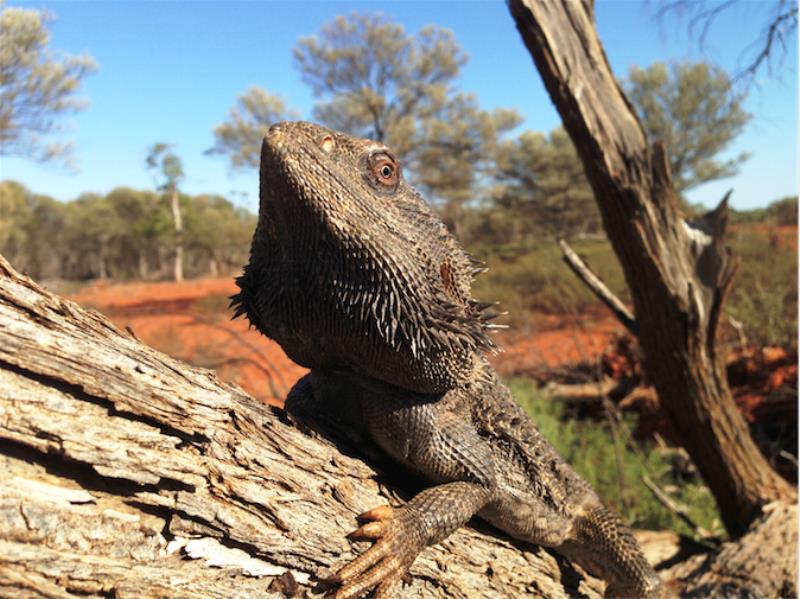Sex gene in dragon lizards makes females when it is in a bad chromosome neighbourhood

Epigenetics is a buzz-word that describes the modification of gene activity by factors “above the gene”, which are often influenced by environmental factors. So you wouldn’t expect a hard-wired genetic system like sex determination to be controlled epigenetically.
But in a new paper on the prestigeous Proceedings of the National Academy of Science of the USA, we show that the sex gene in our model reptile species is controlled, not by the presence or absence of a sex gene, but by its location in a bad neighbourhood on a sex chromosome riddled with “junk DNA” which turns it from an activator to an inhibitor.
In humans and other mammals, whether a baby is born a girl (with two X chromosomes) or a boy ( with a single X and a tiny male-specific Y) depends in a gene called SRY that lies on the Y chromosome. It works to kick-start development of a strip of cells (the genital ridge) into a testis in the embryo. In its absence, the same genital ridge develops into an ovary. The embryonic testis or ovary makes male or female hormones that channel sexual development into male or female pathways.
Sex in other vertebrates; reptiles, birds, frogs and fish, works in the same way, but uses many different sex genes on quite different sex chromosomes to initiate gonad differentiation. For instance, birds have the opposite configuration of ZZ males and ZW females: two Z chromosomes in males and a single Z and female-specific W in females.
In every known case, whether in XY or ZW systems, the sex gene works by its differential presence or absence on a sex-specific chromosomes (the male-specific Y, or female-specific W). Some sex genes work by kickstarting testis differentiation, others by initiating ovary differentation or blocking testis development.
We discovered that our model lizard species (the magnificent Australian central bearded dragon, a popular pet species) has a ZZ male: ZW female system like birds. The Z and W chromosomes were easily distinguished under the microscope because the W had a lot of repetitive (“junk”) DNA that we can stain differentially.
We wanted to know what the sex gene was and how it worked, so we sequenced the DNA of male and female dragons. To our delight we found a gene on the sex chromosomes that has a big part to play in the sex determining pathways of all vertebrates, including humans and fish.
But there was a problem. This gene (nr5a1) had copies on both the Z and W chromosomes, and their sequences were identical. So how could it work differently in ZZ and ZW embryos to make ZZ male and ZW female?
We looked at how these genes were read into messenger RNA and translated into protein in ZZ and ZW animals. In ZZ animals, nr5a1 makes full-length messenger RNA that is translated into sensible protein that binds target DNA sequences to proteins that activate them in ZZ males.
But in ZW animals, as well as these full-length messages, there were 18 messenger RNAs that were spliced together crazily so that the code would be misread from different spots near the middle. These messages would be translated into truncated proteins that contain the DNA binding site, but not the site that binds activating proteins. They would bind DNA but simply get in the way of normal protein, and would block the activation of the target genes. This would block the action of the male-inducing nr5a1 and so be female determining.
This made lots of sense. However, it leaves open the question of what makes the reading of the same gene so different on the Z and W chromosomes. We propose that the repetitive sequences on the W chromosome tie it up into a different conformation, so that when it is read, mistakes are made in the way it gets spliced together. This kind of conformational difference is likely to be the result of epigenetic factors such as differential chemical modifications of DNA, or to proteins that bind to DNA.
If we are right, this will be the first demonstration of a sex gene being controlled, not by genetic, but by epigenetic, factors.
